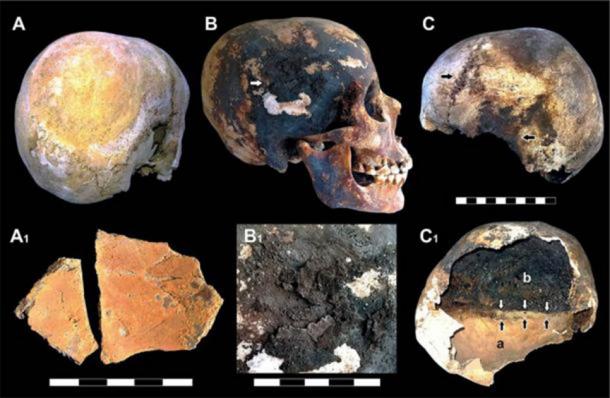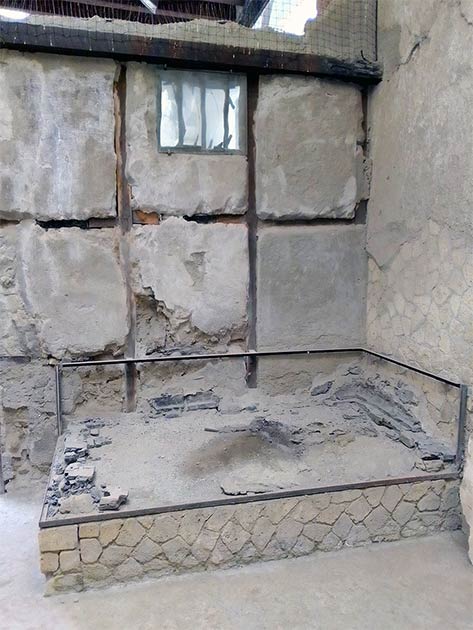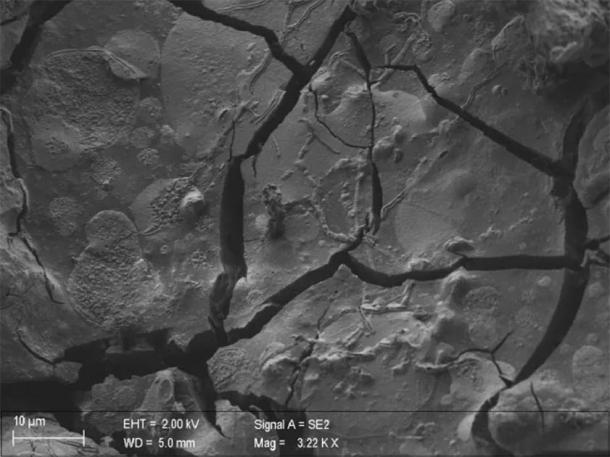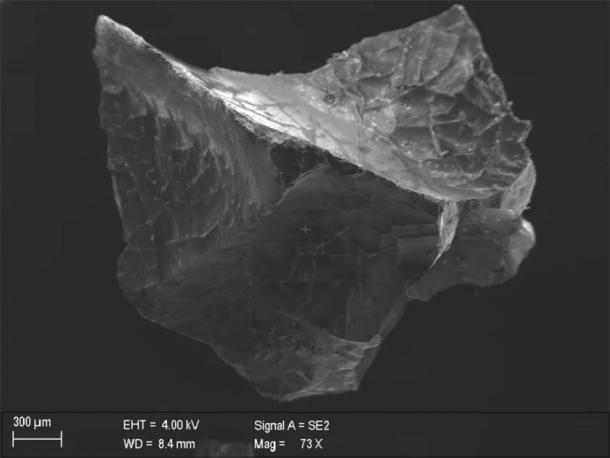The eruption of Mount Vesuvius is perhaps the best-known natural disaster in the ancient world. It preserved whole towns and human remains, which have all been priceless from an archaeological point of view. Researchers now have found the preserved brain tissue of one of the many of Vesuvius’ victims. Moreover, the tissue, which has turned to glass, seems to show the neural networks of the deceased!
The eruption of Mount Vesuvius destroyed several cities and towns and killed up to 2000 people. It sent a massive column of pumice and hot ash into the air. It also sent pyroclastic flows down its slopes onto the Roman urban centers of Pompeii, Herculaneum, and others.
Many of those caught up in the pyroclastic flows, which move incredibly quickly, were preserved and frozen in time. Live Science reports that ‘materials like wood and flesh were carbonized , or essentially turned to charcoal, they were also preserved as they were in the moments after being suddenly heated to 932 degrees Fahrenheit (500 degrees Celsius)’.

Red and black mineral incrustations detected in Vesuvius victims’ skulls. (Image: © 2018 Pierpaolo Petrone et al )
Mount Vesuvius’ Victims
Among these victims of Vesuvius’ eruption were a number of people in the town of Herculaneum. In recent times, several victims of the volcano have been found , who were trying to hide from the lava in a boat shed and presumably trying to escape the flow on the beach. Tim Thompson, Professor of Applied Biological Anthropology, at Teesside University, told Ancient Origins that “When you look at the demographics, it seems that the women and children were sheltering in the boathouses while the men were on the beach, most likely trying to get the boats out ready to sail away.”
Pier Paolo Petrone, a forensic anthropologist, and some colleagues were examining the remains of one of the young victims. They were those of a 20-year-old man found in the center of Herculaneum near a building where the cult of Emperor Augustus was celebrated.

The room in which the man and his preserved brain were found. ( Pier Paolo Petrone )
A solidified spongy mass was found in his chest cavity and this was similar to victims of the ‘firestorms in Dresden and Hamburg, Germany, during World War II’, the researchers wrote in JMNE. The extreme heat had caused the young man’s brain cavity to explode but the experts found something interesting encrusted on the remains of the skill. Shards of black glassy material were found.
The Victim’s Brain Turned to Glass
It appears that the heat in the room melted the flesh of the victim but his ‘brain had been burned to twisted black bits through a process called vitrification,’ reports Live Science . This was the result of a fire caused by molten rock or pumice that has been estimated to have reached a temperature of 520°C. The heads of Vesuvius’ victims who died on the waterfront had also exploded, but they had been burned slowly and as a result, their brains did not vitrify.
This discovery was unusual because extreme heat usually results in a brain being saponified, meaning it is turned into something soapy. Then the experts used an electron microscope and an image-processing tool to examine the vitrified brain. They were especially interested in identifying neural networks.
Neural Networking
Remarkably, they found the outline of a central nervous system and even identified brain cells. Under a powerful electronic microscope, they found that the neural network was highly organized. These networks of synapses help us to classify sensory data and are important in learning. They also help us to adapt to our environment as they aid in decision-making.

A neuron, along with its axons, is visible in this vitrified segment of brain tissue from a victim who was covered by ash when Mount Vesuvius erupted in 79 AD. ( Pier Paolo Petrone, University Federico II of Naples, Italy )
A member of the interdisciplinary team, Piero Pucci took samples of the vitrified brain to examine any evidence of proteins that are important in the functioning of the brain. The Proteomic investigation of the remains revealed proteins that came from several parts of the brain, including those associated with processing emotions and making decisions. Puci also found fatty acids associated with the grease in human hair and fats found in brain tissue. Gizmodo reports the researchers as saying that the results of the protein test ‘further agree with the neuronal origin of the unusual archaeological find’.
The find is important as it allows researchers to study the brain of man from 2000 years ago and this could produce a range of findings. The neural networks can tell us a lot about the cognitive abilities of ancient people. While the discovery of the vitrified brain reveals the variety of ways that the victims of the volcano died, it also demonstrates that they were not all instantaneously vaporized .

A fragment of the vitrified brain of the victim of the Vesuvius eruption. ( Pier Paolo Petrone )
More Questions Will be Answered
It would have been expected that a brain and its neural networks would have been the first thing to decompose and the discovery of the vitrified brain of the Vesuvius victim is little-short of astonishing. Tim Thompson, a biology professor, told Gizmodo that the study “highlights the complexity of preservation at Herculaneum.” He is also baffled with regards to “how preservation like this is even possible,” according to Gizmodo.
However, not all of the academic community are convinced by the claims of the Italian team about identifying ancient neural networks. Zachary Throckmorton, Professor of anatomy at Arkansas, called “their findings suggestive but not definitive’. He believes that the evidence could be interpreted differently and that the researchers had found nerve cells in the remains of the volcano victim.
Discover more about the catastrophic eruption of Mount Vesuvius and other ancient natural disasters HERE in the May, 2019 AO Magazine issue.
Top Image: Victims at Herculaneum. Credit: waldorf27 / Adobe Stock
By Ed Whelan
Related posts:
Views: 0
 RSS Feed
RSS Feed

















 October 4th, 2020
October 4th, 2020  Awake Goy
Awake Goy  Posted in
Posted in  Tags:
Tags: 
















